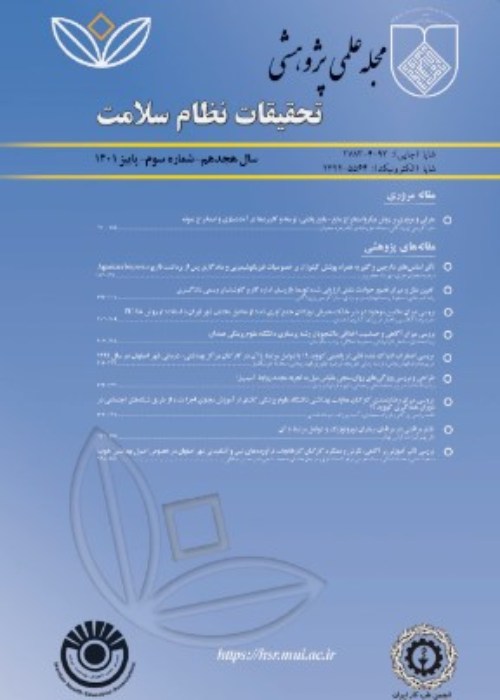Efficiency Comparison of the Microwave Oven and Conventional Electric Furnace in Volume Reduction and the Final Stabilization of Primary and Secondary Raw sludge Production in Wastewater Treatment Plant in South of Isfahan
Author(s):
Abstract:
Background
The Biological Solids produced during wastewater treatment processes are called sludge. As sludge contains various sickening microorganisms such as pathogens, organic and inorganic substances and has adverse effects on human and environment, therefore it should be treated and processed entirely prior to disposal and then disposed in line to the environmental regulations. Thermal treatment is one of the sludge treatment methods. Among these, microwave as one of the methods, could have an important role in sludge treatment. This study investigated the Microwave application to reduce volume and the final stabilization in primary and secondary sludge produced by south Isfahan WWTP in comparison with conventional laboratory electrical furnace.Methods
A batch system was set up to compare the microwave oven and electrical furnace in converting the primary and secondary sludge in south Isfahan WWTP (as a sample only and with adsorbent addition). The effects of relevant parameters tested were included the contact times between 1 and 10 minutes for microwave oven and 240 and 300 minutes for the electrical furnace, heating and the adsorbent dosage in the range of 5 to 30(w/w%) affect of the sludge mass temperature production, weight reduction percentage and total and volatile reduction percentage, coliform and HPC decrease.Findings
The study relieved that by increasing the radiation time, the microwave oven performance on the sludge sample increased significantly. In the samples with different percentages of adsorbent addition, the mass temperature increased to 600°c in microwave oven, however, in the samples treated in electrical furnace or with no adsorbent addition(in the microwave oven) no significant effect was observed on the temperature. Overall the study findings on the microbiological characteristics also indicated that the sludge samples contain different percentages of adsorbent addition. The removal efficiency of coliforms and HPC increased up to 100% the microwave oven but in the samples with no adsorbent addition it was able to reduce them to 4.5 and 5 log respectively.Conclusion
Overall data achieved from the study revealed that, if the sludge samples without adsorbent additives are placed under microwave radiation exposures in different times scales, they only are dried lose their humidity, but with different adsorbent addition dosage, in addition to drying, due to excessive temperature increasing in the sample mass, Pyrolysis process may occur and then the sludge samples are stabilized during digestion.Language:
Persian
Published:
Journal of Health System Research, Volume:6 Issue: 2, 2010
Page:
276
magiran.com/p838232
دانلود و مطالعه متن این مقاله با یکی از روشهای زیر امکان پذیر است:
اشتراک شخصی
با عضویت و پرداخت آنلاین حق اشتراک یکساله به مبلغ 1,390,000ريال میتوانید 70 عنوان مطلب دانلود کنید!
اشتراک سازمانی
به کتابخانه دانشگاه یا محل کار خود پیشنهاد کنید تا اشتراک سازمانی این پایگاه را برای دسترسی نامحدود همه کاربران به متن مطالب تهیه نمایند!
توجه!
- حق عضویت دریافتی صرف حمایت از نشریات عضو و نگهداری، تکمیل و توسعه مگیران میشود.
- پرداخت حق اشتراک و دانلود مقالات اجازه بازنشر آن در سایر رسانههای چاپی و دیجیتال را به کاربر نمیدهد.
In order to view content subscription is required
Personal subscription
Subscribe magiran.com for 70 € euros via PayPal and download 70 articles during a year.
Organization subscription
Please contact us to subscribe your university or library for unlimited access!




